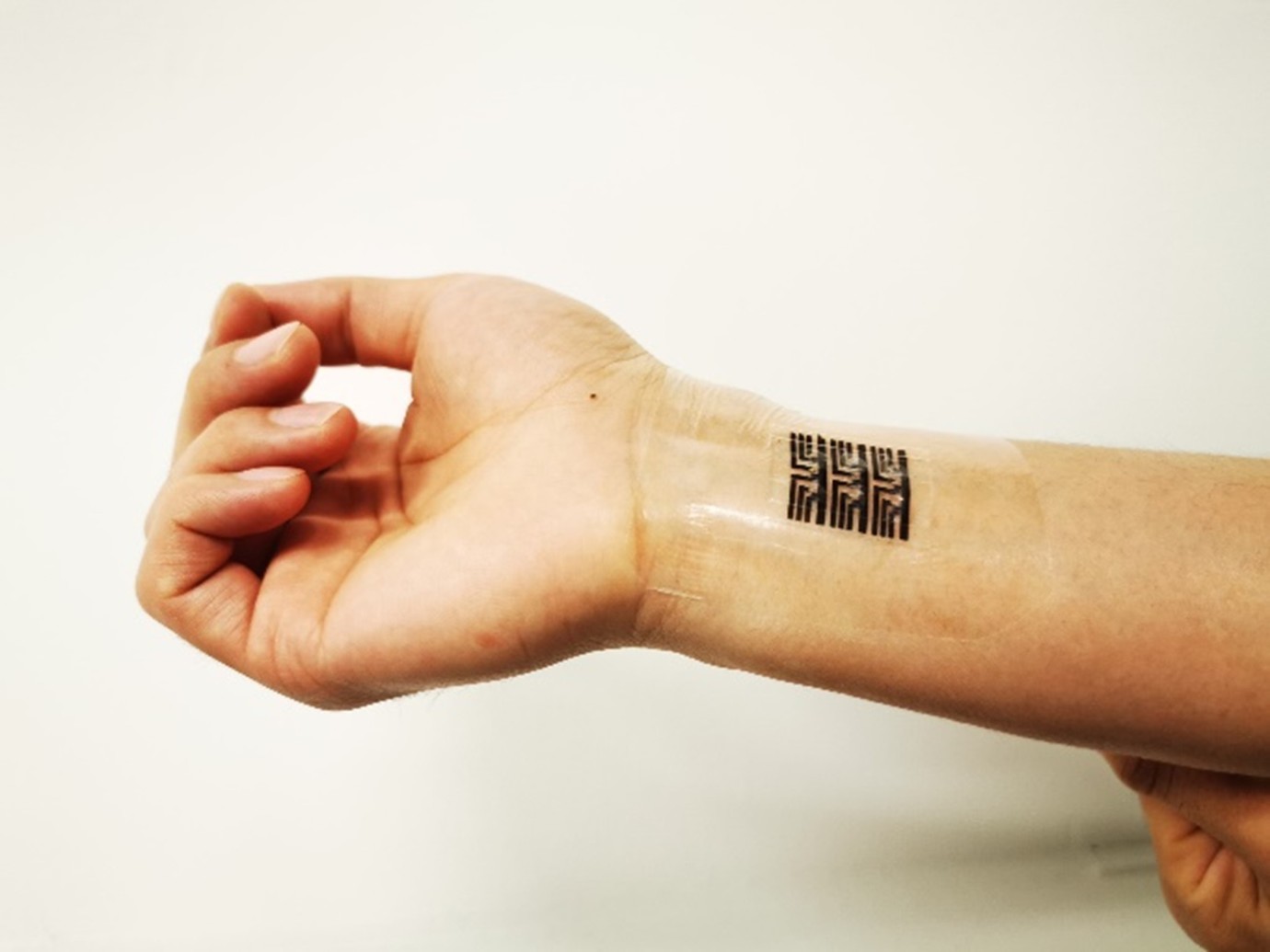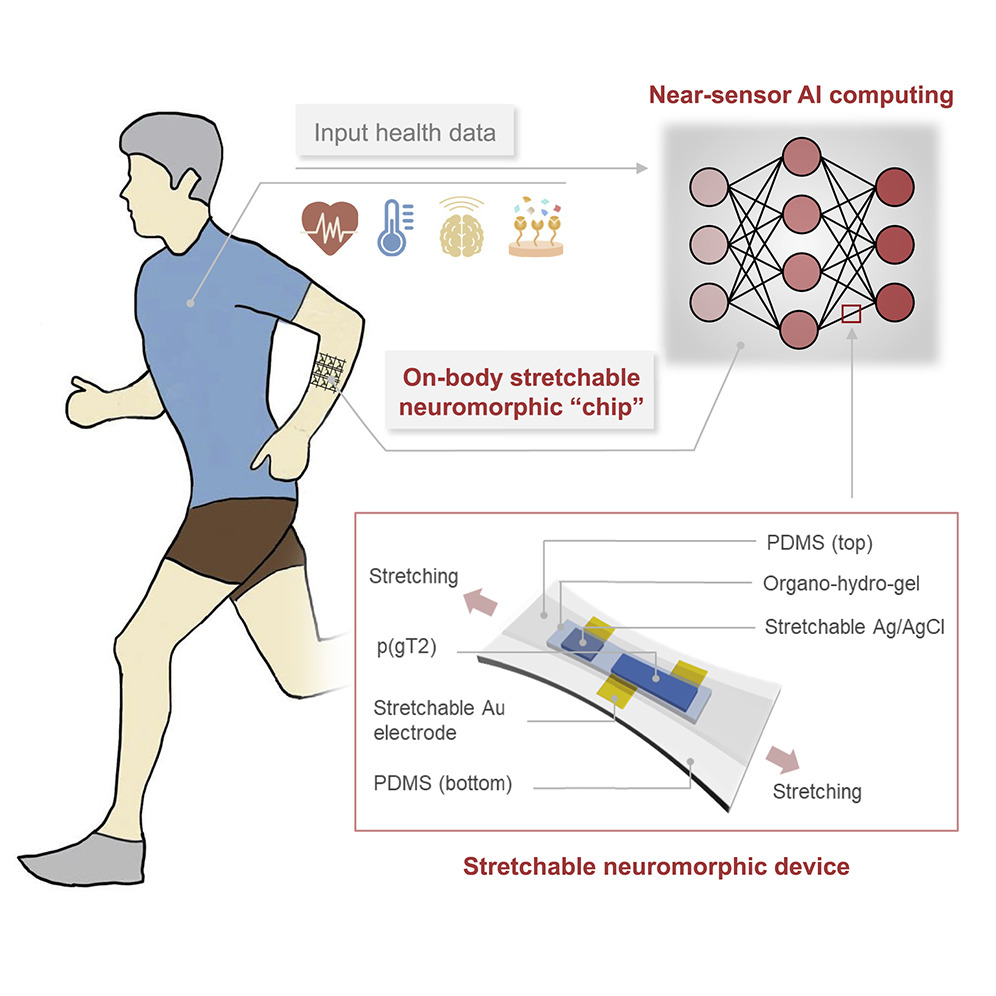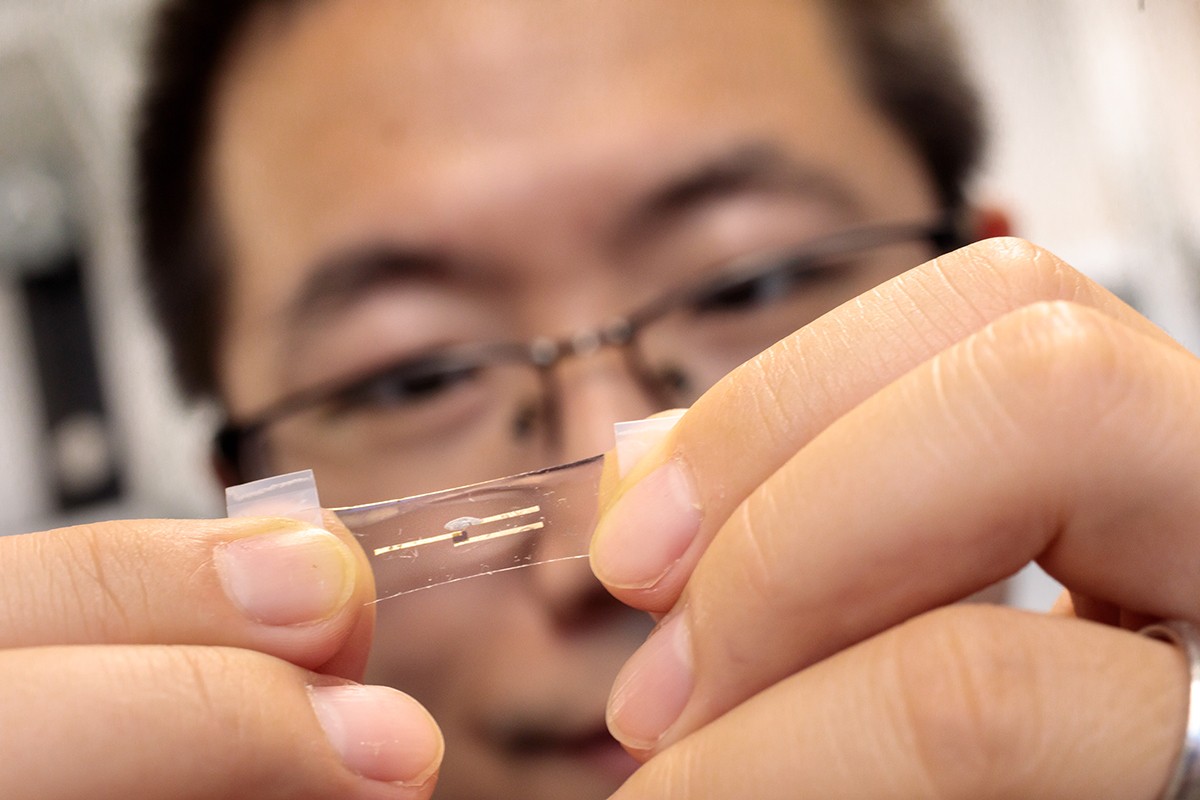
What if wearable electronics could monitor your health and detect diseases even before symptoms appear?
That’s exactly the vision of Sihong Wang and his research team at the University of Chicago’s Pritzker School of Molecular Engineering (PME).
“With this work we’ve bridged wearable technology with artificial intelligence and machine learning to create a powerful device which can analyze health data right on our own bodies,” Wang says.
The assistant professor and his team envision a future where wearable biosensors can track indicators of health, including sugar, oxygen, and metabolites in people’s blood.
With this purpose in mind, they have developed a chip that can collect data from multiple biosensors and draw conclusions about a person’s health using machine learning.
One of the biggest challenges, according to Wang, was creating a device that integrates seamlessly with the skin.
That’s why the team turned to polymers, which have the ability to stretch and bend. They then assembled them into a device that allows the AI-based analysis of health data.
The chip — called a neuromorphic computing chip — doesn’t work like a typical computer. Instead, it functions more like a human brain, with the ability to store and analyze data in an integrated way.

The research team tested their tool by analyzing electrocardiogram (ECG) data, which records the electrical activity of the human heart.
They trained the device to categorize ECGs into five groups: one for healthy signals and four for types of abnormal signals. Then, they tested it on new ECGs.
The chip could accurately classify the heartbeats whether it was stretched or bent.

Wang emphasizes that this research is a starting point, and he’s already planning new iterations of the chip to expand the types of devices with which it can integrate, as well as the types of machine learning algorithms it uses.
Eventually, it could be used to send patients or clinicians alerts, or to automatically tweak medications.

While this sounds like a fascinating use of AI, getting the technology there isn’t the only obstacle.
As beneficial as it’d be to constantly monitor our health without stressful doctor visits, how and who handles such sensitive data through a chip is an ethical concern that should be dealt with beforehand.
You can find the full research paper here.
Get the TNW newsletter
Get the most important tech news in your inbox each week.
